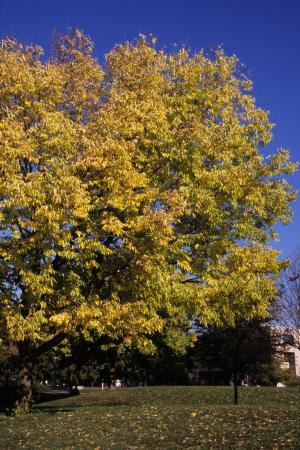| Celtis occidentalis Hackberry
|
| Description | This will never be the most popular tree in the neighbourhood, both due to its unflattering name and ornamental characteristics that aren't particularly noteworthy during any particular time of year, but this species fits the role of a durable and serviceable shade tree that we should be utilizing more in our urban areas. |
| Usage | Shade tree, buffer strip, wildlife plantings, reclamation |
| Origin | Southwestern Quebec and Southern Ontario; much of eastern and central USA |
| Hardiness zone | 3 |
| Size | 12-25m |
| Form/texture | Small to medium tree, rounded vase shape; Very distinctive bark of corky ridges; "Bark dark brown covered by warty excrescences or marked by long ridges"(Peattie). |
| Growth rate | Quick; long lived |
| Leaf | Alternate, simple; deep green turning to yellow in fall |
| Flower | Inconspicuous Monoecious |
| Fruit | Small, fleshy drupe matures to dark purple, used by many species of birds and animals. "Berries contain 160 times more calcium than the average wild fruit — over 25 species of gamebirds and songbirds dine on them almost year round" (Blouin). |
| Exposure/culture | Full sun to part shade. Wide range of soil textures, soil pH. Tolerates occasionally wet to prolonged periods of dry soil. Moderately sensitive to salt and compaction. Easily transplanted. Susceptible to cosmetic problems such as nipple gall and witches' broom. |
| Comments | "Plant a hackberry and build a birdhouse, and bluebirds return the favor by eating beetles, weevils, sowbugs, caterpillars and other garden and tree pests" (Blouin).
"It is a good city tree — limbs usually start high up the tree, out of the way from traffic, vandalism and wires" (Blouin). One common name, sugarberry, refers to the sweet date-flavoured fruit. Naturally found on limestone soils with chiquapin oak and blue ash, and drier, sandy soils. Cultivars are proving to be more resistant to problems than seedlings. "Celtis are often rugged, handsome, deep-rooted shade trees afflicted by few serious pests. Lacking flamboyance and romantic associations, hackberries are like cinder blocks: eminently useful but stigmatized by default" (Jacobson). "So sturdy is its ability to withstand harsh conditions that it is highly recommended by the Forest Service for planting in the more southerly prairie states, where so many other kinds of trees fail to grow" (Peattie).
|
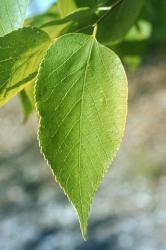
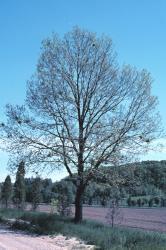
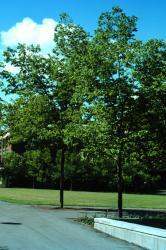
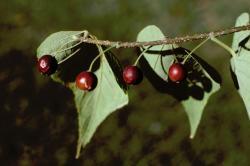
Reference:
Blouin, G. 2001. An Eclectic Guide to Trees East of the Rockies. Boston Mill Press. Erin, ON.
Jacobson, A.L. 1996. North American Landscape Trees. Ten Speed Press, Berkely California. 722pp
Peattie, D.C. 1964. A Natural History of Trees of Eastern and Central North America. 2nd ed. Bonanza Books. New York, NY. 606pp.
